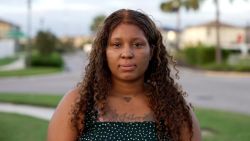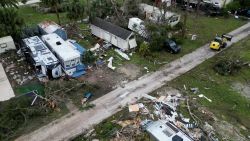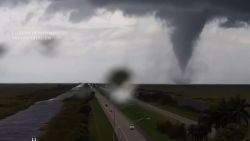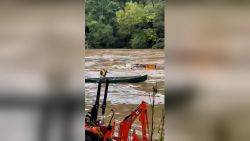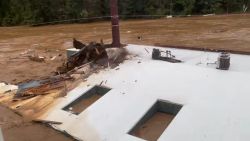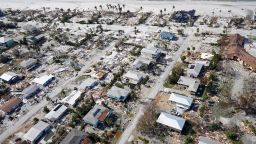An older couple who rode out Hurricane Ian in their home on Sanibel Island in Florida could not agree on evacuating after parts of the causeway to the mainland were destroyed.
“We’re going. We’re going,” the unidentified man told his partner as she looked down from the home’s upper porch.
“But where?” she asked.
Fort Myers, she was told by the man and members of a rescue mission who arrived by boat.
“The bridge is down.”
“I’m not ready to go,” she said Thursday, staying behind.
Ian has left at least two people dead on the barrier island on the Gulf of Mexico, and volunteers from Louisiana’s Cajun Navy and other rescue groups have been out on boats checking on the roughly 200 households that did not evacuate.
There have been 16 storm-related deaths in Lee County, where Sanibel Island is located, according to Sheriff Carmine Marceno.
“When Americans are in trouble in bad spots – usually we do war zones and conflict zones, but Hurricane Ian qualifies,” said Bryan Stern, a former military intelligence officer more accustomed with operating in places like Ukraine and Afghanistan.
Stern is co-founder of Project Dynamo, a group of veterans who locate at-risk Americans in conflict zones and transport them to safety. Its name comes from the operation that evacuated Allied soldiers during World War II from the beaches of Dunkirk in France.
“Now here we are. We’re going to rescue some people off Sanibel, which is cut off from the world right now,” he said. “So it’s very apropos.”
‘This is true carnage’
Ian ripped away several parts of the causeway that was the island’s only access to Florida’s mainland. On Thursday night, dozens of people remained stranded, according to Sanibel Mayor Holly Smith.
At least five sections of the Sanibel Causeway – which connects Sanibel and Captiva islands to the mainland – were washed away by the storm, Lee County officials said.
Roughly 200 households did not evacuate ahead of the storm, the mayor said. Twelve people were rescued off the island with injuries and about 40 people were rescued without injuries, the mayor told CNN. Sanibel City Manager Dana Souza reported the two fatalities.
When asked later on CNN if the city is currently livable, the mayor said, “Frankly, no.”
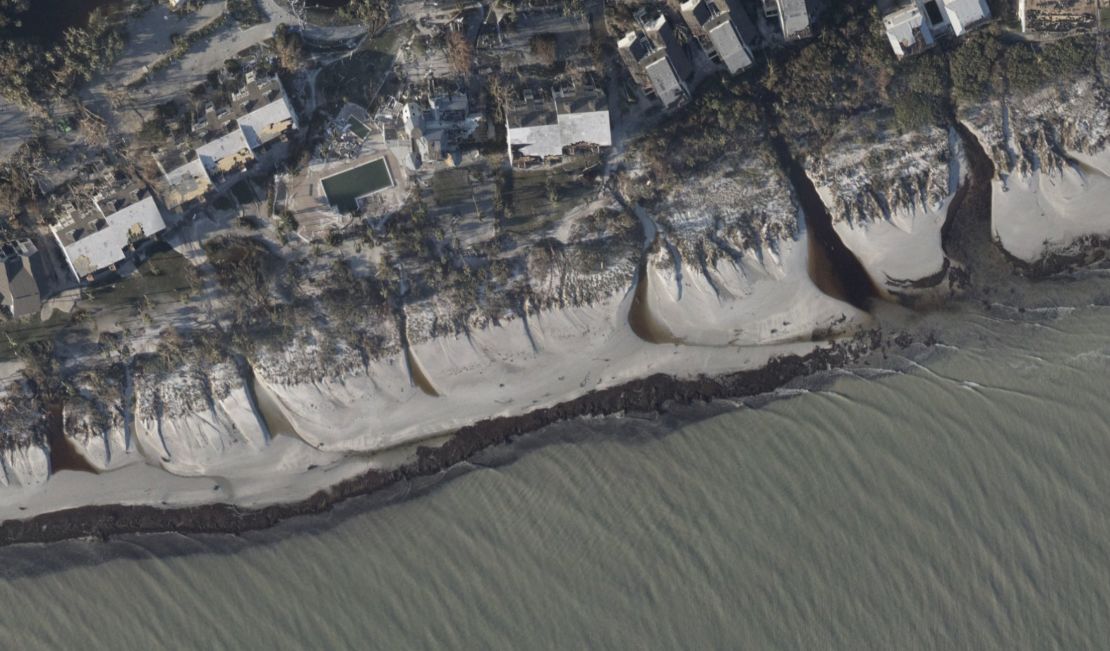
Many beach cottages that lined the shores of Sanibel Island were wiped away by Ian’s storm surge, new aerial imagery from the National Oceanic and Atmospheric Administration shows. Most homes appear to have sustained roof damage, along with damage from the storm surge and flooding.
“The destruction is unbelievable,” Stern told CNN. “This is true carnage. It’s a war zone.”
Nancy and Robert Sharon were among the people Stern’s outfit and volunteers from the Cajun Navy rescued on Thursday.
“I heard they weren’t going to do anything after the bridge closed down but my granddaughters are in Ohio and she was crying hysterical when I talked to her,” Nancy Sharon said.
Her grandchildren contacted the Cajun Navy and Project Dynamo and begged them to check for proof of life.

Because of the severed causeway, rescue teams were being transported by helicopter to the islands, where they went door-to-door checking on residents, Florida’s State Fire Marshal Jimmy Patronis told CNN’s Wolf Blitzer Thursday evening. Florida’s National Guard was assisting in those transportation efforts, Patronis added.
An estimated 6,400 people lived in the City of Sanibel as of April 2021, per the US Census Bureau. The islands are home to a number of hotels and resorts, as their beaches draw a significant amount of tourists each year.
A 2017 City of Sanibel count measured annual bridge traffic over the causeway at over 3 million vehicles.
Search and rescue operations underway
Lee County officials were assessing damage Thursday and also conducting search and rescue operations, Lee County Manager Roger Desjarlais said in a Thursday afternoon briefing.
Federal urban search and rescue teams were deployed from across the country and expected in the county Thursday and into the early Friday hours, and were “prepared to go to work right away,” he added.
All 15 shelters in the county that opened prior to the storm’s arrival remained open, Desjarlais said, adding that by late Wednesday, roughly 4,000 people were there.
“Given the amount of damage in the community, I think it’s reasonable to expect that those shelters will begin to fill up a little more. We have space for about 40,000 people,” the county manager added.
A boil water order was in place countywide, he said. Bridge inspections were also underway across the county, with help from engineers at the Florida Department of Transportation. Officials hope all bridges will be inspected by Friday, Desjarlais said.
There was also “extensive damage to the buildings,” on Sanibel Island, he said, and all bridges to Pine Island have also failed, so there is no way to travel there by vehicle.
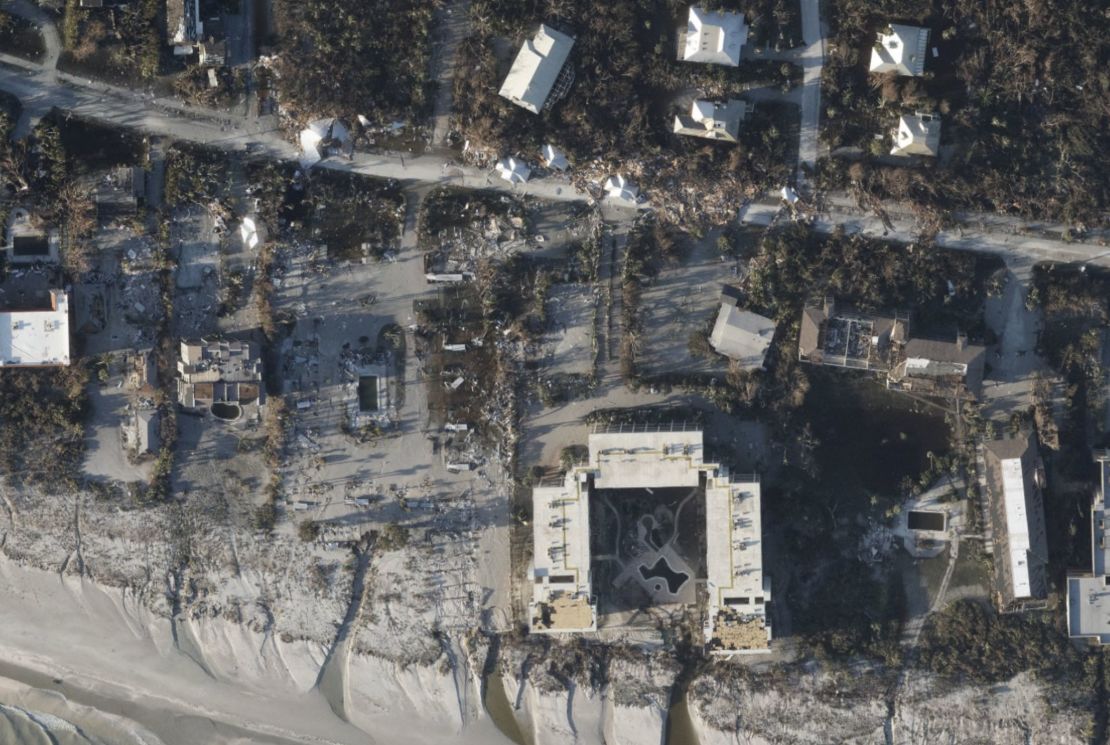
“I can tell you that in all these years I have not seen damage to Lee County from a storm like this. When you take a look at the barrier islands, particularly from the air, it’s very clear to see where the storm came onshore,” Desjarlais said in Thursday’s briefing.
‘Biblical storm surge’
Sanibel was devastated, Gov. Ron DeSantis said in a news conference Thursday afternoon, adding the area was hit with a “biblical storm surge.”
“It washed away roads, it washed away structures that were not new and could withstand that,” he said, adding that while many people evacuated, some people had been brought off the island safely. Air operations continue, the governor said, since the area is inaccessible by ground.
The causeway will be rebuilt, DeSantis said. “But that’s not something that will happen overnight.”
Residents were urged to stay inside to avoid injuries and to allow first responders to assess the damage, Lee County officials said Thursday.
DeSantis said messages continued to come in from families concerned about loved ones. But many of those stranded on the island are waving and thanking rescuers for coming but staying put for now, he said.
By Amy Simonson, Christina Maxouris, Rebekah Riess and Dakin Andone.




